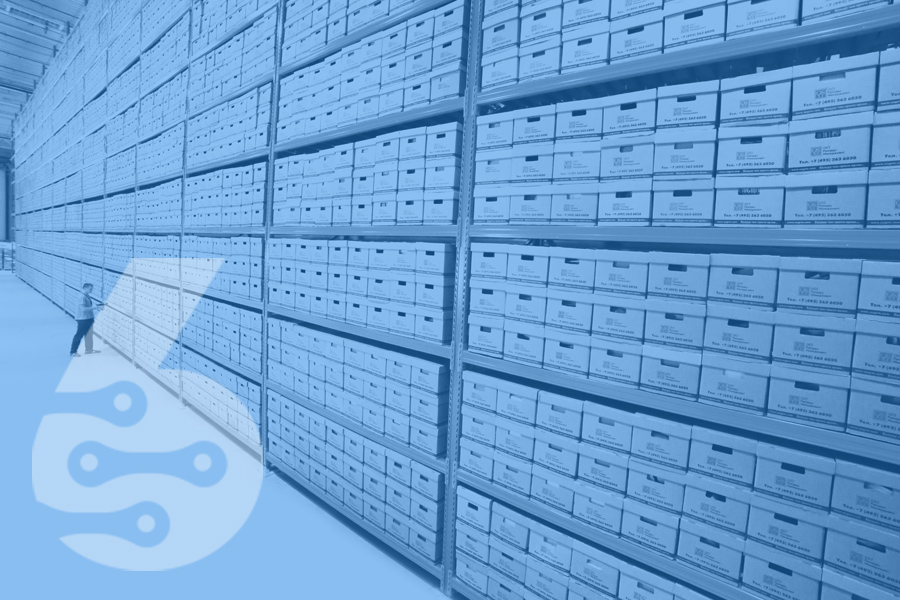- ERP Systems
- 19.09.2022
ERP Systems: How Do They Work?
What Are the Basic Features, and What Types or ERPs Are There?
Dr. Andreas Maier
19.09.2022
“ For any organization there are just a few key processes that handle the core business. All the other processes support the key processes on a certain aspect. “
Enterprise Resource Planning (ERP) systems have become integral to many businesses. But what are ERPs exactly? How do they work? What are the different types of ERPs? And above all, what are the basic features that every ERP should cover?
In this blog post, we will answer all those questions and more! We will briefly explain ERP systems and discuss the three main types: on-premises ERP, cloud-based ERP, and hybrid ERP. Finally, we will give you a quick overview of some of the most notable features that all ERP systems should have.
Recap: What is an ERP?
Full article here: What is Enterprise Resource Planning
ERPs are a type of business software that allows companies to manage and integrate all their important business functions, such as accounting, sales, HR, and manufacturing, into one system. This streamlines business processes and helps businesses to run more efficiently. ERP systems can be on-premises or cloud-based; hybrid ERP systems are also becoming more popular.
On-premises ERP systems are installed on the company's servers and are maintained by internal IT staff.
Cloud-based ERP systems are hosted by the vendor and accessed over the internet.
Hybrid ERP systems are a combination of both on-premises and cloud-based systems.
Each type has its advantages and disadvantages. On-premises ERP systems are more expensive to set up and main, but they offer more flexibility and control over the data. Cloud-based ERP systems are cheaper to set up and maintain and offer less flexibility and control over the data. Hybrid ERP systems offer the best of both worlds: they might be cheaper than on-premises ERP systems and more flexible than cloud-based ERP systems.
Most ERP systems have features in common, such as accounting and finance management, CRM (customer relationship management), HRM (human resources management), purchasing/supply chain management, and manufacturing/production management. However, different ERP systems may have distinctive features depending on the business's specific needs. For example, some ERP systems may have industry-specific modules (e.g., healthcare or retail.)
So, how can businesses use an ERP system?
An ERP system can be used to streamline business operations, allowing for faster decision-making, improved visibility into data and processes, greater efficiency, better customer service, reduced costs and increased revenues. An ERP system also helps reduce manual paperwork and automate tasks such as inventory tracking, order processing, financial management, accounting and reporting. Additionally, it can be used for supply chain management, human resources and customer relationship management. By utilizing an ERP system, businesses can maximize the use of their resources and improve overall performance. With the right implementation strategy, businesses can harness the power of an ERP system to reach new heights!
Benefits of using an ERP system:
- Improved efficiency: ERP systems integrate all departments and functions across a company, allowing for more streamlined and efficient processes.
- Enhanced decision making: With real-time data and reporting capabilities, ERP systems provide the necessary information for managers to make informed decisions.
- Increased flexibility: ERP systems are modular and can be customized to fit the specific needs of a company. This allows for flexibility as the company grows and evolves.
- Reduced costs: By automating and streamlining processes, an ERP system can help a company save money in the long run.
- Better data security: ERP systems often come with advanced security features to protect sensitive data.
Use cases for companies that use an ERP system:
- Manufacturing companies: ERP systems can help manage the production process, including scheduling, materials management, and quality control.
- Wholesale and distribution companies: ERP systems can help manage inventory, orders, and shipping.
- Retail companies: ERP systems can help manage store operations, including point of sale, inventory management, and financial reporting.
- Professional service firms: ERP systems can help manage client relationships, project management, and financial reporting.
- Non-profits: ERP systems can help manage donor relationships, fundraising, and financial reporting.
Big Business Capabilities, Small Business Simplicity.
How does an ERP system work?
ERP systems work by integrating several aspects of a company's operations into a single software system. This can include financial information, sales data, production statistics, and more. By consolidating all this data into a single system, companies can better understand their overall performance and make more informed decisions.
ERP systems are typically based on a structured "ledger" system. A structured ledger means that all the data in the system is organized into tables (or "ledgers") that can be easily accessed and analyzed. Structuring data makes it easy to track data changes over time and see how various parts of the company are interconnected.
ERP systems also usually have built-in tools for connecting with other software systems used by the company. External connectivity allows companies to access data from other systems (such as customer relationship management or supply chain management systems) directly from the ERP system. This data exchange provides a complete view of the company's operations and helps ensure that all data is up to date.
Examples of ERP Modules
Each company's needs are different, so there is no one-size-fits-all ERP system. However, most ERP systems will have core modules covering an enterprise's basic functions. These modules can include:
- Financial management: This module includes functions such as general ledger, accounts payable, accounts receivable, and financial reporting. It allows a company to manage and track its financial transactions and performance.
- Human resources management: This module includes functions such as payroll, benefits administration, and employee records management. It allows a company to efficiently manage its human resources and personnel data.
- Supply chain management: This module includes functions such as purchasing, inventory management, and logistics. It allows a company to efficiently manage its supply chain, including the procurement of raw materials and the distribution of finished products.
- Manufacturing: This module includes functions such as production planning, quality control, and materials management. It allows a company to efficiently manage its manufacturing processes, including the production of goods and the management of materials used in production.
- Project management: This module includes functions such as task assignments, project timelines, and resource allocation. It allows a company to effectively plan and manage projects, including the allocation of resources and tracking of progress.
- Customer relationship management (CRM): This module includes functions such as sales forecasting, customer service, and marketing campaign management. It allows a company to efficiently manage its customer relationships, including the sales process and customer support.
- Sales and marketing: This module includes functions such as lead generation, sales forecasting, and marketing campaign management. It allows a company to effectively plan and execute sales and marketing strategies.
- Inventory management: This module includes functions such as stock levels, reordering, and warehouse management. It allows a company to efficiently manage its inventory, including the tracking of stock levels and the optimization of inventory management processes.
- Procurement: This module includes functions such as vendor management, purchasing, and contract management. It allows a company to efficiently manage its procurement processes, including the sourcing of goods and services and the management of vendor relationships.
- Purchase Management: This functionality allows a company to manage the entire ordering process, and working closely with inventory management, ensures stock is managed properly – end to end.
- Production planning: This module helps plan and schedule production processes, assign resources to tasks, and track progress.
- Sales and order management: This module helps manage customer data, process orders, and track shipping status.
- Business intelligence and analytics: This module includes functions such as data analysis, reporting, and dashboards. It allows a company to gain insights from its data and make informed business decisions.
Other specialized modules may also be available depending on the ERP system. For example, a manufacturing company might need a module for quality assurance or production schedules. Retail companies might need a module for point-of-sale transactions or gift card processing. The possibilities are endless; therefore, one of the most important "Features" might be the API, which allows for customization and integration with other software.
Technologies Used for ERP Systems
Different technologies are used depending on the type of ERP System (on-premises, client installed, cloud-based or hybrid). The most common technology for on-premises ERP systems is the relational database management system (RDBMS). For cloud-based or hybrid ERP systems, web services are more common.
The client-side installed ERP systems use different technologies like Java, .NET Framework, and Microsoft SQL Server. Sometimes, these systems also use web technologies like Hypertext Markup Language (HTML) and JavaScript.
The most crucial factor determining the technology used in an ERP system is the platform on which it will be deployed. For instance, Microsoft technologies will be used if the system is deployed on a Windows platform. Similarly, open-source technologies could be used if the system is deployed on a Linux-based platform.
Another key factor is the database. Most ERP systems use RDBMS databases, but this can also vary depending on the type of system. For instance, cloud-based ERP systems often use NoSQL databases.
The final factor to consider is the user interface (UI). This will determine the technologies used for the front end of the system. For instance, if the UI is web-based, technologies like HTML, CSS, and JavaScript or web apps built on top of frameworks like AngularJS or Vue JS could be used. If the UI is desktop-based, then technologies like Windows Presentation Foundation or WPF will be used.
Examples of ERP Systems
As we mentioned earlier, there are many different types of ERP systems; while they all share some common features, they all work differently. Let's see some examples of different ERP systems on the market.
SIX ERP

SIX ERP is a cloud-based ERP system used by small and medium businesses and global corporations. SIX ERP is easy to use and has a simple interface, specifically trimmed to improve usability and fast adoption by employees. The system uses web technologies like HTML, CSS, and JavaScript to improve speed and easy expandability.
Features of SIX ERP include:
- Financial management
- Human resources management
- Inventory management
- Sales and order management
- Production planning
Type: Managed Cloud ERP / On-Premise
Cost: Low
Features: Extensive
Oracle NetSuite

Oracle NetSuite is one of the most popular ERP systems on the market. It is used by small and medium businesses as well as large enterprises. The system is cloud-based and uses web technologies like HTML, CSS, and JavaScript.
Features of Oracle NetSuite include:
- Financial management
- Human resources management
- Inventory management
- Sales and order management
- Production planning
Type: Cloud ERP - SaaS
Cost: Medium to High
Features: Extensive
SAP ERP

SAP ERP is one of the market's most widely known ERP systems. It is used by medium businesses as well as large enterprises. The system is on-premise or cloud-based (SAP S/4 HANA) and uses RDBMS databases and their proprietary S/4 HANA databases.
Features of SAP ERP include:
- Financial management
- Human resources management
- Inventory management
- Sales and order management
- Production planning
Type: On-Premise ERP or S/4 HANA hosted
Cost: High to Very High (S/4 HANA)
Features: Extensive
ODOO

ODOO is a type of ERP system that is used by small businesses. It is open source and uses web technologies like HTML, CSS, and JavaScript. Due to the complexity of hosting and managing the open-source system, many businesses opt for the ODOO hosted version, which is user-based pricing.
Features of ODOO include:
- Financial management
- Human resources management
- Inventory management
- Sales and order management
- Production planning
Type: Open-source ERP
Cost: Free (open source) to Medium (Hosted)
Features: Limited
Microsoft Dynamics AX

Microsoft Dynamics AX is an ERP system used by medium to large businesses. The system is on-premises and uses Microsoft-owned technologies like .NET and SQL Server.
Features of Microsoft Dynamics AX include:
- Financial management
- Human resources management
- Inventory management
- Sales and order management
- Production planning
Type: On-Premise ERP
Cost: High to Very High
Features: Extensive
Conclusion
An ERP system can be a big investment for a company in terms of money and time. However, the benefits of having an integrated, streamlined business process can be tremendous. When choosing an ERP system, it is important to do your research and choose a system that will fit the specific needs of your business.
There are many different types of ERP systems on the market, each with its features and pricing. This article has examined some of the most popular ERP systems and key features. Hopefully, this will help you in your decision-making process when choosing an ERP.
If you're looking for an ERP system that is easy to use and uses modern web technologies, SIX ERP should be at the top of your list. With extensive features covering financial management, human resources management, inventory management, sales and order management, and production planning, SIX ERP can help small startups to global corporations streamline their business processes and improve efficiency. Contact us today to learn more about how SIX ERP can help your business achieve its goals.
About the author
Andreas Maier is a results-driven CEO with nearly 30 years of experience in ERP, digital transformation, and IT consulting. He has held leadership positions in Fortune 100 companies such as rentalcars.com (PCLN) and Intrasoft International, a leading EU-based R&D software vendor. With a Ph.D. in Neural Networks from the University of Cologne, Andreas combines deep technical expertise with a strategic approach to business process optimization.
As the founder and co-founder of multiple successful startups, including XXL Cloud Inc., eShopLeasing Ltd, and WDS Consulting SA, his expertise lies in ERP consulting, IT strategy, and process automation. His work is focused on helping businesses implement scalable ERP solutions, streamline operations, and drive digital transformation.
Related articles

Warehouse management systems (WMS) explained – Managing modern businesses.
Warehouse operations are at the heart of many businesses, enabling the smooth and efficient flow of goods to customers. However, managing inventory, orders, shipping, and personnel in one or more...
Why Every Business Needs an ERP System
Every business needs an ERP system. An ERP, or enterprise resource planning, system is a software application that enables a company to automate and track tasks across all departments. By...



